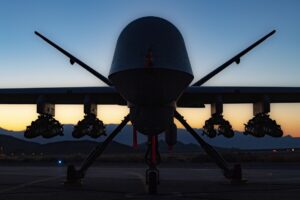
While the Pentagon and military analysts question the wisdom and the effectiveness of imposing a "no fly zone" over Ukraine or supplying that country with a small number of used MiG-29 fighters to help beat back the Russian invasion, the dean of the Mitchell Institute for Aerospace Studies has broached supplying Ukraine with General Atomics' MQ-1 Gray Eagles and MQ-9 Reapers and says that training Ukrainians in the use of the drones for strikes/reconnaissance and sustainment of the drones would…














